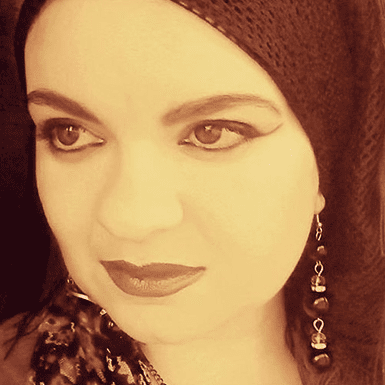In the epilogue to On the Pleasures of Living in Gaza (OR Books, 2025), Mohammed Omer Almoghayer writes, “We have our sorrow, which cannot be soothed by the analysis of a world that hasn’t experienced it. We have our loss, which others can only ponder in the realms of fiction and exaggeration. And we have our exile, in its abstract and pale meaning, where we are stranded as visitors, as perpetual refugees, with a crushed history, places that are no more, people you won’t find, streets that have ended, and stones that fear we won’t return.”
The quoted paragraph makes the entire book even more precious, because what is lost in Gaza and of Gaza is what the author makes the subject of his narrations. Without living and experiencing Gaza, it is impossible to imagine what life in Gaza is like or looked like, because colonialism has dictated and disseminated much of its imposed narrative.
But Gaza’s own narratives exist and thrive. In his recollections, which are written vividly and with much detail, Omer transports the reader to a different kind of imagining – one that is more relatable in its experiences, in the mundane, in the social customs, trials, tribulations and hope. Omer notes that the book was written in the present tense to make Gaza’s experience more tangible. Away from the snippets of Gaza that are condensed into news briefs or statistics, people are given prominence, their stories amplified even if briefly. Gaza itself is painted in colour, and despite the colonial reality that Israel inflicted upon Palestinians, Omer presents us with brief portraits of Palestinians and their lives in a society that thrived, remained resilient and strived not just to survive, but to live and accomplish.
It is the little details that a picture of Gaza emerges – one that is obliterated by mainstream depictions. One instance that particularly resonates is Naji’s story, a Palestinian who was photographed after being detained by the Israeli military and half-buried in a sandy ditch. The photograph piqued the interest of an American family who ended up sponsoring Naji’s family, but what really sparks attention is the tangible link between Palestinians and their land. The author’s quest to find Naji was solved when a Palestinian identified the location – Umm Al-Nasr – by looking at the soil in the photograph.
Besides the link between Palestinians and their land, it is also the bonds that Palestinians in Gaza have formed with each other that make Omer’s narrations come to life. A doctor in Gaza does not merely provide medical advice; there is also the social aspect to consider and navigate. An imam makes distinctions between religion and culture, showing an appreciation for women’s lives in Gaza which is much overlooked in mainstream narratives. Mass weddings provide equal chances for Palestinians to embark on the next chapter of their lives. Quail hunters in Gaza are not necessarily seeking to make a profit; some prioritise family and immediate needs. And many small pleasures that are taken for granted by the rest of the world are occasional luxuries in Gaza. Occasionally, someone from abroad steps in to help create realities out of dreams that Israel annihilates. But the fact remains that Palestinians want what other people want – Israel has created an aberration out of normalcy.
To Stand With Palestine: Transnational Resistance and Political Evolution in the US
“The people of Gaza are just like us, seeking happiness and joy in life, despite the sadness that surrounds them,” an Italian chef says during a pizza festival organised in Gaza as part of internationalist solidarity gestures. The statement encapsulates the obvious, but the actual words also indicate the level of dehumanisation that colonial and mainstream narratives disseminate unabatedly. Without colonialism, there would possibly be no need to describe Palestinian people in Gaza as “just like us”. The humanity of Palestinians would not be put into question and left to be justified.
For every part of Gaza that is celebrated, such as the care with which antiques in the enclave had been preserved, there is an opposing story of destruction by Israel, which destroys Palestinian heritage or appropriates it to justify its colonial presence in Palestine.
Palestinian hopes for a better future in Gaza have also been shattered not just by Israel’s military aggression, but also the blockade on Gaza. Omer writes, “The list comprised an absurd array of banned items, including lentils, pasta, A4 paper, ginger, chocolate, hatcheries, wheelchairs, books, shoes, crayons, and even toilet paper.” Israel’s sabotage of Palestinian life is also evident in politics. Omer writes of Hamas leader Ahmed Jabari, who was assassinated by Israel just hours after receiving a draft agreement for a long term truce.
Towards the end of the book, Omer narrates his own personal ordeal of being kidnapped and tortured by individuals with allegiances to IS in Gaza, and who ask Omer to help them get rid of Hamas. While Omer is eventually released, several questions are left unanswered. The account, however, dispels Israeli Prime Minister Benjamin Netanyahu’s claims equating Hamas with IS; a narrative which Netanyahu sought to manipulate in the immediate aftermath of the Arab Spring.
Omer’s book not only describes Gaza, it also gives the readers a chance to think and immerse themselves in Palestinian society. There will never be a complete understanding of what being a Palestinian in Gaza means, but common ground in humanity exists. More importantly, Omer gently opens the space for Palestinian voices to emerge; a reminder that the rest of the world should increase their time listening to, not talking over, the Palestinian people.









